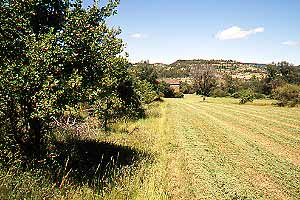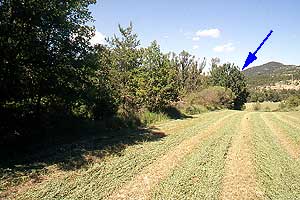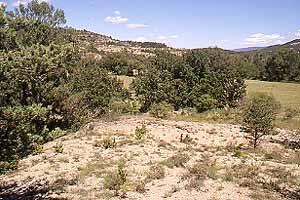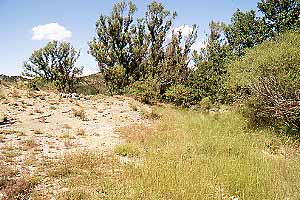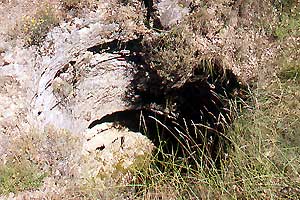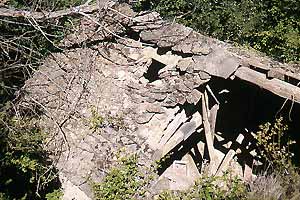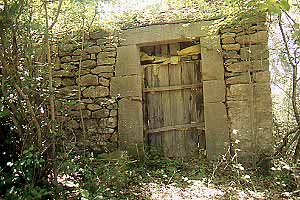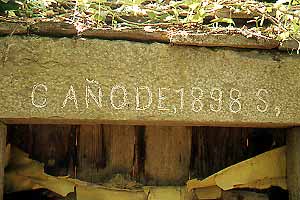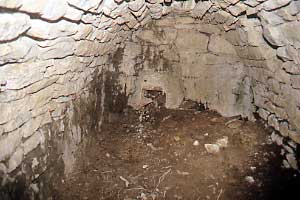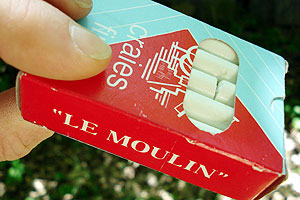
Alavés

From Sabiñanigo drive southwards toward Huesca. Past Lanave turn left for Boltaña. After less than 2 km you'll reach the branch for Belarra.
From Boltaña cross the Río Ara and take the road towards Lanave. After about 20 km you'll pass the road for Matidero and after again about as many kms the mill of Escartín, then Villobas and eventually the spot where is signposted.
The sand and gravel road first crosses the river Guarga (you need enough clearance for this) and then slowly climbs the slope. The track takes a sharp turn to the right and then descends into the valley of a tributary. Find a place for the car where the road splits.
Pictures: 27.VI.2007
